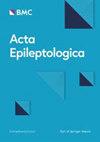Developmental and epileptic encephalopathy 44 due to compound heterozygous variants in the UBA5 gene: a case report
IF 1.2
Q4 CLINICAL NEUROLOGY
引用次数: 0
Abstract
Abstract Background Developmental and epileptic encephalopathy (DEE) is a group of rare inherited disorders characterized by intellectual disability, delayed development, epileptic seizures, and other related symptoms. DEE44 is caused by mutations in the UBA5 gene, which encodes a ubiquitin-like protein involved in protein degradation and cell signaling. However, there is limited information on the genotype–phenotype correlation of DEE44, and its clinical features remain to be fully characterized. Case presentation We report a 12-month-old infant who presented with epileptic spastic seizures beginning at 4 months of age, accompanied by overall developmental delay, short stature, microcephaly, inability to hold his head upright, chasing vision, and high muscle tone in the extremities. Genetic findings showed compound heterozygous mutations of the UBA5 gene: NM_024818 c.562C > T(p.R188X) from the mother and NM_024818 c.214C > T(p.R72C) from the father. Conclusions This case report expands the clinical spectrum of DEE44 and highlights the importance of considering DEE44 in the differential diagnosis of developmental delay and epilepsy, even in the absence of classical symptoms suggestive of the condition. We hope that this case report will advance the understanding of DEE44 and improve the expertise of clinicians and early diagnose of this disease.由UBA5基因复合杂合变异引起的发育性和癫痫性脑病1例报告
摘要背景发育性癫痫性脑病(Developmental and epileptic enceopathy, DEE)是一组以智力残疾、发育迟缓、癫痫发作及其他相关症状为特征的罕见遗传性疾病。DEE44是由UBA5基因突变引起的,UBA5基因编码一种泛素样蛋白,参与蛋白质降解和细胞信号传导。然而,DEE44的基因型-表型相关性信息有限,其临床特征仍有待充分表征。我们报告了一个12个月大的婴儿,他在4个月大时出现癫痫性痉挛发作,伴有整体发育迟缓,身材矮小,小头畸形,无法保持头部直立,追逐视力,四肢肌肉张力高。遗传结果显示,UBA5基因存在复合杂合突变:NM_024818 c.562C >T(p.R188X)来自母体和NM_024818 c.214C >T(p.R72C)来自父亲。本病例报告扩大了DEE44的临床范围,并强调了在发育迟缓和癫痫的鉴别诊断中考虑DEE44的重要性,即使在没有提示该病症的经典症状的情况下。我们希望这一病例报告能够促进对DEE44的认识,提高临床医生的专业知识和对该病的早期诊断。
本文章由计算机程序翻译,如有差异,请以英文原文为准。
求助全文
约1分钟内获得全文
求助全文
来源期刊

Acta Epileptologica
Medicine-Neurology (clinical)
CiteScore
2.00
自引率
0.00%
发文量
38
审稿时长
20 weeks
 求助内容:
求助内容: 应助结果提醒方式:
应助结果提醒方式:


